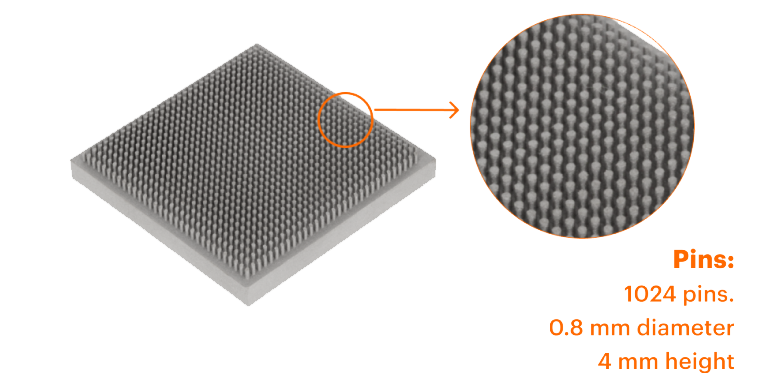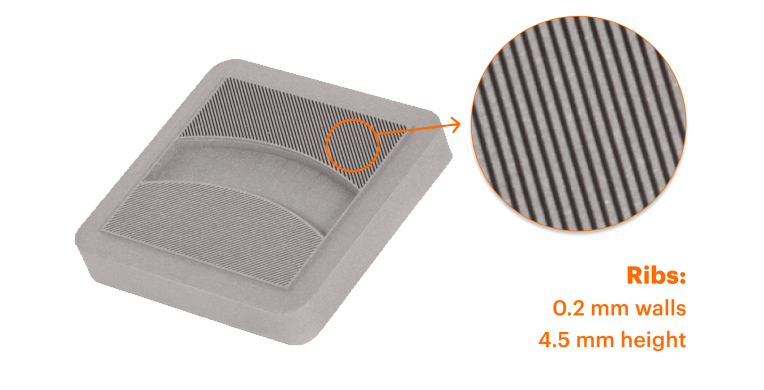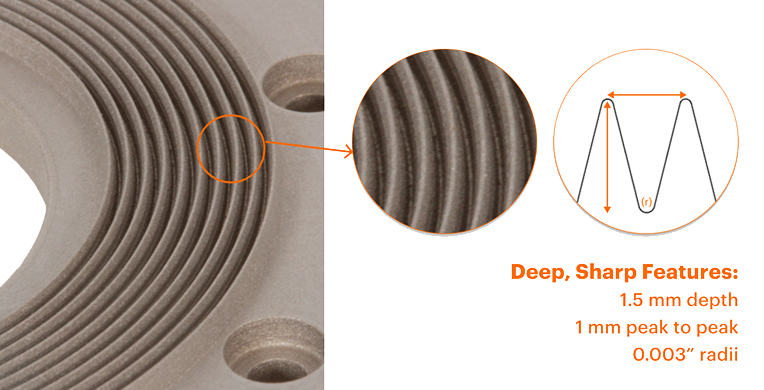JULY 29, 2025 – SAN FRANCISCO, CA –Mantle, the leader in automated toolmaking systems, today announced the release of its new Top Definition capabilities. This major software update further extends Mantle’s best-in-class fine feature capabilities, which are commonly used by their customers to eliminate the costly and time-consuming sinker EDM operations traditionally required to produce these features. With Top Definition, features as thin as 0.008″ (0.2 mm) are printed directly—an 80% reduction from previous limits—while dramatically improving the as-printed strength of small features that were previously too fragile to print. Mantle has made the update available to all customers via an over-the-air software release.



Conesys, a US-based manufacturer of high-performance electrical connectors, has successfully deployed multiple Mantle printers, marking a significant advancement in their tooling production capabilities.
“For more than 10 years, I’ve been searching for a 3D printing technology robust enough for production molds. After validating Mantle’s technology and experiencing its unmatched precision, we’ve integrated multiple Mantle printers into our operations. We’re now reducing the time and cost associated with producing new tooling, allowing us to respond to our customers more quickly and bring new products to market. The adoption of Mantle’s new Top Definition capabilities will further enhance precision, driving even greater efficiency and throughput within Conesys’s toolroom.”
— Mark Edwards, Chief Information Officer, Conesys
How Top Definition Works:
The Top Definition process differs from Mantle’s standard layer-by-layer printing and machining approach. Instead of processing each layer individually, the new method prints a solid block of material at the top portion of the tool. This solid “top block” is then machined from above in a top-down process, which encases and provides structural support for details much smaller than Mantle’s standard layer-by-layer print and machining can support.

This approach enables the production of significantly finer features with improved surface finish quality. Mantle’s can now accommodate wall thicknesses of 0.008” (0.2 mm) and pins with diameters as small as 0.02” (0.6 mm).
Mantle’s Automated Toolmaking System Continues to See Rapid Adoption Among OEMs, Moldmakers, and Molders
Mantle’s toolmaking technology continues to gain widespread adoption among OEMs, moldmakers, and molders who are choosing to automate their precision tooling production. With manufacturers under mounting pressure to reshore operations, accelerate product development, slash lead times, and address critical skilled labor shortages, Mantle’s system is a clear solution to these challenges.
Industry leaders across the tooling ecosystem—including Conesys, P1 Technologies, American Tool & Mold, International Precision Mold (a Bankier Company), and Seaway Plastics—have recently adopted Mantle’s technology to transform their toolmaking operations. These manufacturers represent every segment of the market:
OEMs accelerate time-to-market with rapid mold tooling, dramatically reducing the timeline from design to first-out-of-tool (FOT) parts.
Injection molders increase internal tooling capacity and can offer conformal cooling. By shortening lead times, they’re helping their customers reshore production and winning more business.
Moldmakers expand capacity by automating the most complex parts of the mold build, delivering steel tooling to customers in significantly less time.
For more information or to schedule an interview, please reach out to ethan.rejto@mantle3d.com.
About Mantle:
Mantle develops an automated toolmaking system specifically for injection mold manufacturing. The company’s technology addresses longstanding challenges in the precision tooling industry, where manufacturers have increasingly relied on overseas suppliers.
Mantle’s system combines 3D printing with precision machining to produce injection mold tooling that meets the tight tolerances and surface finish specifications required for mold inserts. The automated approach reduces dependence on skilled manual labor, which has become increasingly scarce in domestic toolmaking.
The technology enables injection molders and OEMs to produce mold tooling in-house, reducing lead times that can stretch months or even years when outsourcing. Mantle’s approach also addresses concerns about intellectual property protection and supply chain reliability that have grown as manufacturers seek greater control over their tooling.
Mantle’s customer base comprises injection molders, moldmakers, and OEMs, who find Mantle to be a strategic advantage in highly competitive markets.
Media Contact:
press@mantle3d.com
Mantle 3D Systems, LLC
1950 Cesar Chavez St.
San Francisco, CA 94124
415.655.3555